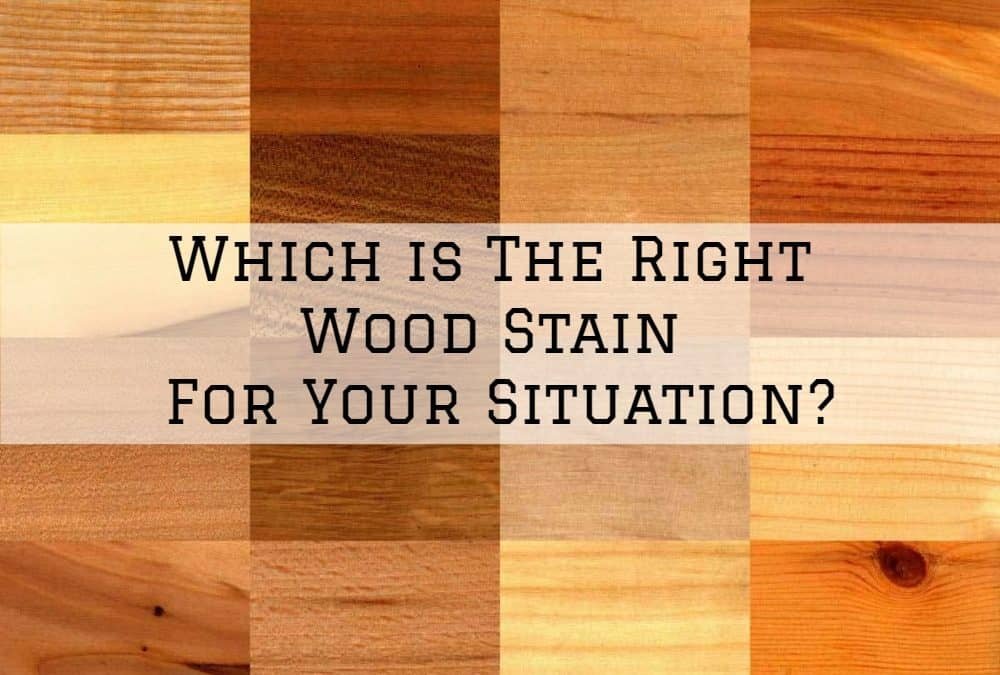Which is The Right Wood Stain For Your Situation?
Which is The Right Wood Stain For Your Situation?
Staining your wood surface is a cost-effective way of adding a protective coat while transforming the surface’s aesthetic appeal. Whether it’s your home’s siding, deck, fence, kitchen cabinets, or furniture, a quality stain job is a sure way to restore the glorious looks of your wooden surface and protect it from the elements and wear and tear.
The kind of stain you choose can significantly impact how the job turns and how long it lasts. Stains perform differently under varying wood surface conditions and surrounding wear and tear elements. To help you choose the best stain for your type of surface and condition, let’s take a quick look at the different types of stains available out there:
Types of Wood Stains
Stains generally get absorbed into the wood grain and may not form a surface film like paint. So, there are varying levels of opacity to choose from depending on the level of protection and whether or not you want to show off the natural beauty of the wood. And for that, we have the following:
• Transparent Wood Stains –these stains don’t alter the color of the wood and are absorbed into the wood without forming a surface film. They allow the natural beauty of the wood –grains, knots, etc. –to show through. However, they have slightly lesser surface protective qualities. You may need to reapply them after six months.
• Semi-transparent Stains –these are similar to transparent stains. However, they may slightly alter the surface color of the wood, and they have a slightly higher level of surface protection.
• Solid Stains –these are pigmented and may slightly or entirely cover the wood surface depending on their specific formulation. They typically don’t get absorbed deep into the wood but form a solid film on the surface, more like paint.
Notes: Regarding the above three categories, many homeowners and painting contractors prefer using transparent and semi-transparent stains on new or physically intact wood surfaces. This allows them to show off the natural beauty of the wood while still keeping it protected from the elements.
Solid stain would benefit Older surfaces with signs of wear and tear. This is because it offers superior surface protection and helps cover any surface imperfections and signs of wear and tear that the wood might have.
Sealer Stains
Sealer stains come pre-mixed with the sealer right into the formulation. So this typically allows you to apply the sealer stain and color in one step, which helps minimize the time required. Ready Seal wood stains penetrate deep into the wood, moisturizing it with waterproofing oils –great for exterior staining on decks, fences, and siding.
Varnish Stains
These are essentially non-pigmented paints because they include the same ingredients used in oil paint, except color pigments. It offers quite a durable and high level of protection, but it takes relatively longer to dry once applied.
Non-grain-raising (NGR) Stains
This type of stain typically utilizes a mixture of volatile spirits and aniline dye, which can be slightly expensive compared to other options. NGR stains are often at their best performance when used on hardwood, which makes them a suitable choice for exterior decks. Generally, close-grained woods and wood that do not absorb oil stains properly can benefit from NGR stains.
Closing Thoughts
The above summary is a broader view of the types of stains and some insights on what would work best for your situation. However, to get comprehensive advice on the specific type of stains to use for your project in Amador County, California, you might want to consult a painting expert.
If you need help staining your deck, home exterior, kitchen cabinet, or furniture in Amador County, California, our experienced team at Hines Painting can help. Simply give us a call at 209-256-4587 for a FREE estimate or if you have any inquiries.
And if you live at Galt, CA. Contact us at Galt House Painter.


